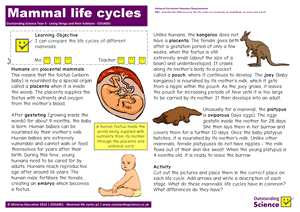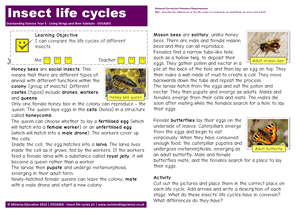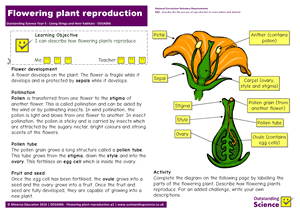

I can compare the life cycles of different amphibians.
Children learn about the life cycles of 3 different amphibians - frogs, salamanders and axolotls. They create 3 life cycle diagrams, adding their own explanations and diagrams or cutting and pasting those provided. They compare the life cycles of these amphibians.
I can compare the life cycles of different mammals.
Children learn about the life cycles of 3 different mammals - the human, the kangaroo, and the platypus. They create a life cycle diagram for each mammal, writing their own descriptions and either cutting and pasting pictures or drawing their own. They discuss similarities and differences between the life cycles of these mammals.

4 pages
I can compare the life cycles of different insects.
Children learn about the lifecycle of the butterfly and two different species of bee - the honey bee and the mason bee. They create 3 life cycle diagrams, one for each insect, and compare them.

4 pages
I can compare the life cycles of different birds.
Children learn about the life cycles of the chicken and the common cuckoo. They create two life cycle diagrams, describing each stage in their own words, and compare them.

3 pages
I can compare the life cycles of mammals, amphibians, insects and birds.
Through a 2-player game, children explore different ways of sorting animals according to their life cycles. Using 9 challenge cards containing descriptions such as 'undergo metamorphosis' and 'are eusocial', children sort 10 different animals. They discuss which grouping was most difficult and attempt to create their own challenge cards.

2 pages
I can describe how flowering plants reproduce.
Children label a diagram of a flower and carpel and complete an explanation text showing how flowering plants reproduce.

2 pages
I can investigate whether a new plant will grow from cuttings.
By cutting up a plant such as a potato or tomato plant, children investigate which parts will grow into a new individual.

1 page
I can explain how animals reproduce sexually.
Children explain the process of animal reproduction, including the stages of sperm and egg production, mating, fertilisation, and the growth of a zygote into an embryo.

2 pages